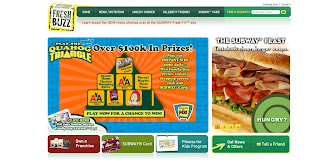
How exactly this Web site, which started in late September, slipped past me is beyond me, because it’s great. I suppose it is rather inconsequential at this point anyways, though; the nice thing is that I found it. Created by Ten4, this highly interactive site, Dylanmessaging.com, was created to promote “Dylan,” which is a greatest hits compendium available in a 1 CD Edition, or a 3 CD “Deluxe Digipack” Edition, both of which you can buy directly from the Web site (always a good idea from a production standpoint). The entire site is designed to look like an album cover of sorts, though it also comes off slightly resembling an old newspaper.
In addition to being able to buy the actual album, and being able to find out relevant information about it, the site also links to other Dylan works such as “No Direction Home,” directed by Scorsese, and several other DVD’s. But the site is designed and engineered around the Messaging concept. If you click on “Send Someone a Message,” the truly interactive part of the site becomes visible. Here you can create your own message, which can say anything, on 10 different sheets of paper, which Mr. Dylan himself (from 40 years ago) will hold up…you can then send this message to your friends via email. Of course, at the end of your message there is a quick plug for the new Dylan album.
Check out the neat little video that I made Here.
 After you create your own message, you can click on “The Video,” where you can view the entire music video for Dylan’s song “Subterranean Homesick Blues”, which is the background (and the canvas) for the message that you, yourself create. According to the site, which actually took its synopsis of the video from Wikipedia, “The video takes place in an alley behind the Savoy Hotel in London where poet Ginsberg and Neuwirth make a cameo in the background.”
After you create your own message, you can click on “The Video,” where you can view the entire music video for Dylan’s song “Subterranean Homesick Blues”, which is the background (and the canvas) for the message that you, yourself create. According to the site, which actually took its synopsis of the video from Wikipedia, “The video takes place in an alley behind the Savoy Hotel in London where poet Ginsberg and Neuwirth make a cameo in the background.” This site is certainly a must-visit for any big Dylan fan, and it is well worth the visit for anyone who has even a slight interest in him and his music. And for those who have no interest in Dylan at all (though I would find this somewhat hard to believe), the site is great for its viral marketing and advertainment value, at the very least.

















































